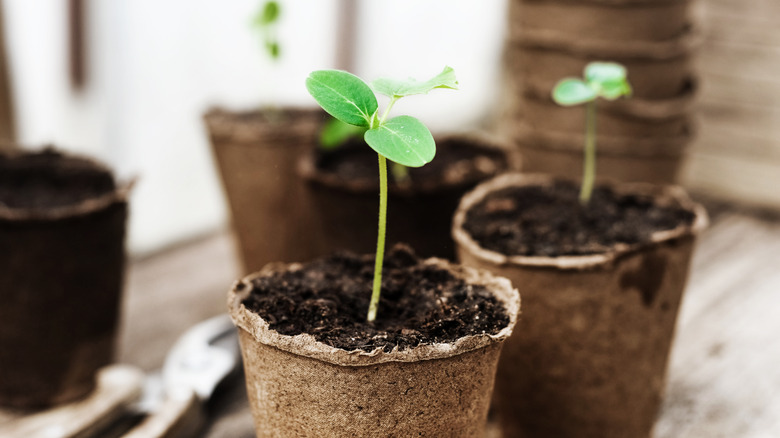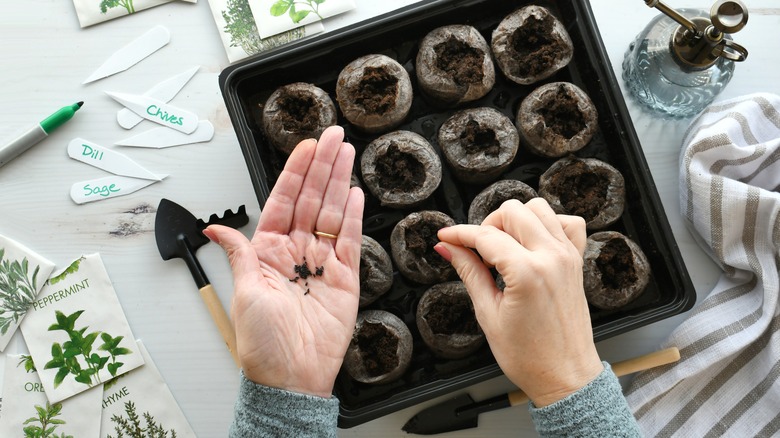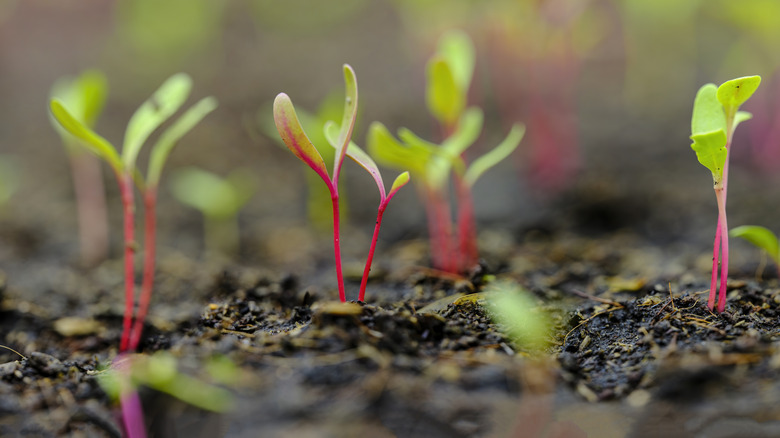How Often You Should Water Seedlings, According To Our Master Gardener
We may receive a commission on purchases made from links.
Seed starting season has begun, and as those seeds evolve into sprouts, they need a consistent amount of water. Soil that is too wet can cause tender seedlings to rot, but they also won't last long in dry conditions. Seedlings grow best in a sterile moisture-retaining planting medium, like a store-bought seed starting mix. With the right watering routine, these blends retain moisture without keeping too much water around the plant roots. The ultimate goal is to water frequently enough that your planting medium holds about the same amount of water as a wrung-out sponge. The frequency with which you water your seedlings will depend on their current growing environment and will change as they grow.
While it would be nice to be able to say, "Water your seedlings every X number of days," there are too many variables that determine if it's time to water. The key to success is keeping a close eye on your young plants. Keen attention is crucial at the beginning of the planting process because consistent observation will help you see how quickly your planting medium dries out. For example, if you are starting seeds in a covered planter, water will evaporate much less quickly than if they are exposed to the air in a home with low humidity. Indeed, many factors determine soil moisture, but the biggest ones are whether they are growing indoors or out.
Indoor seedlings
It's much easier to control soil conditions when starting seeds indoors. You control the temperature, humidity, light, and water. The biggest challenge for indoor seedlings is keeping the soil moist but not wet. Those little roots don't tolerate much variation in conditions, so a container with good drainage is vital. In case you get overzealous with your watering, a loose seed starting blend can help self-correct by releasing excess moisture.
For seedlings started in covered containers, like indoor greenhouses, the need for watering is minimal while they are covered since they are in a self-contained environment. However, when it's time to take the cover off, be sure to keep a close eye on the soil conditions, ensuring it stays consistent while the seedlings adjust to their new growing conditions. If you're starting seeds in an open container, it won't take long to figure out how quickly the seed-starting mixture dries out. Check your seedlings every day, and gently add water if the top of the blend is dry.
Outdoor seedlings
Whether you're starting your seeds outside or in a greenhouse, you should be prepared for every type of weather. Greenhouse-grown seedlings may dry out very quickly; even though the humidity may be high, the warm sun will create heat, leading to speedy evaporation (which, of course, causes the humid conditions). Young plants in a greenhouse should be checked at least once daily, and you'll need to monitor the weather closely. When temperatures reach above 60 on a sunny day, it will get hot very quickly in a small greenhouse. Be prepared to provide ventilation so you don't accidentally cook your plants. A Bluetooth outdoor thermometer is very helpful in keeping track of the heat in your greenhouse, like the Govee Bluetooth Hygrometer Thermometer for $15 on Amazon.
Seedlings started outside tend to be more relisient from the very beginning as they are exposed to the elements from the moment they break ground. If these young plants are in containers, you should water them whenever the soil surface is dry. However, if they have been directly sown in the ground, you can wait to water them until the soil is dry one inch below the surface — unless you notice signs of wilting. Some very shallow seeds may need more frequent watering. Your watering schedule will depend on how, when, and where your seeds are started, but keep a close eye on them and keep the soil moist to give your garden the best start.


